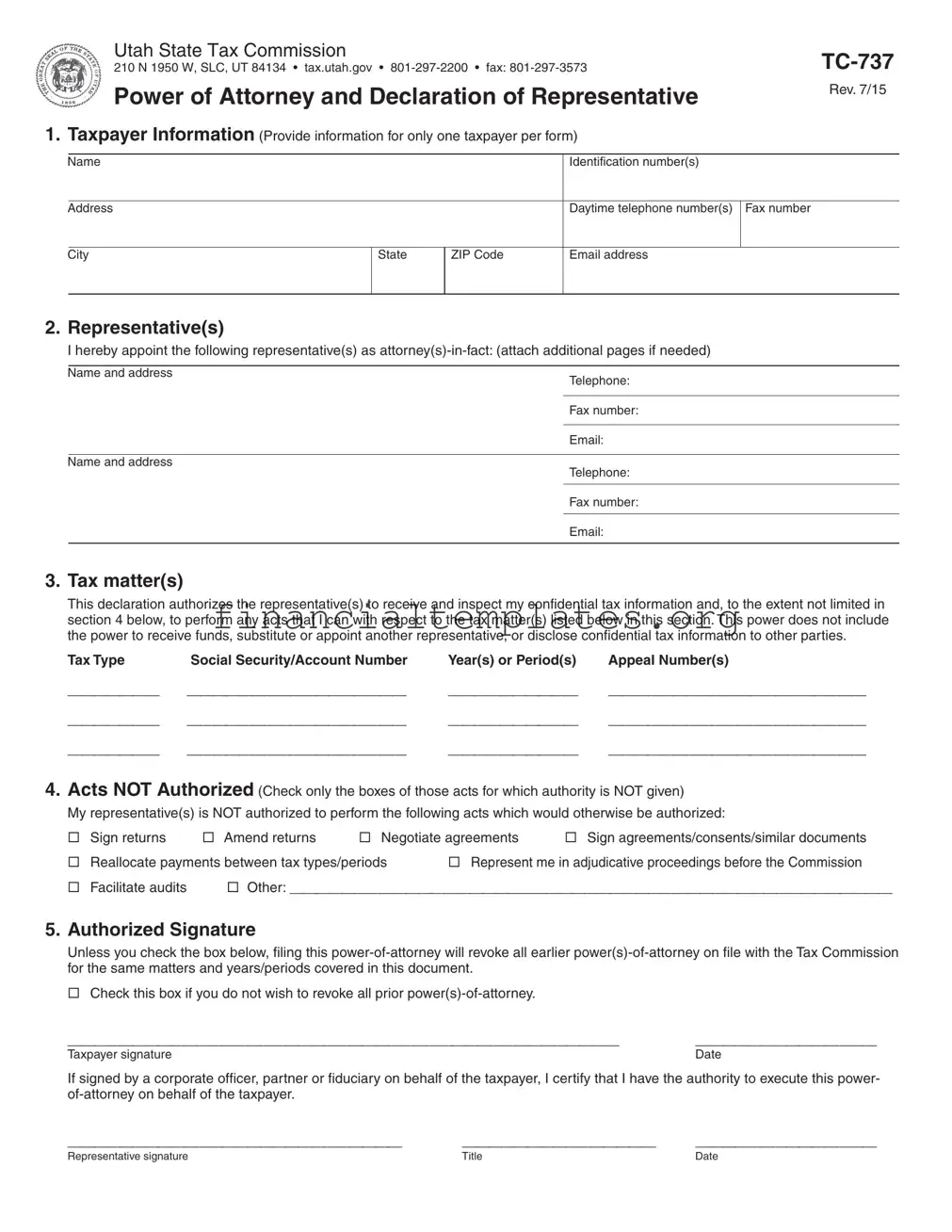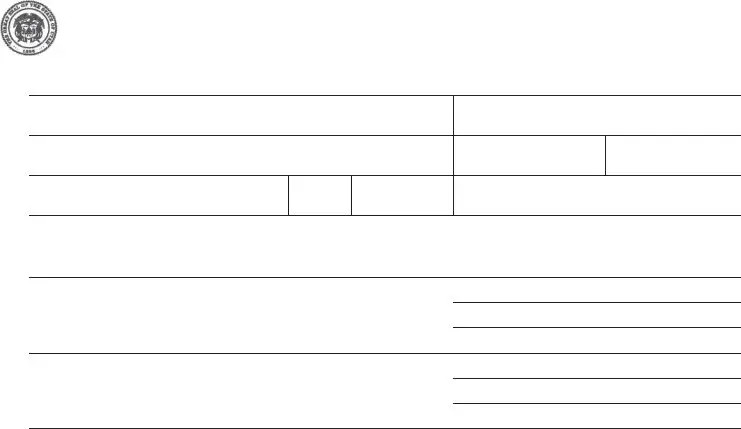The IRS Form 2848, Power of Attorney and Declaration of Representative, is closely related to the Tax POA Form TC-737. This document similarly allows a taxpayer to appoint an individual, often a tax professional or attorney, to represent them in dealings with the IRS. Like the TC-737, it specifies the extent of the powers granted, including which tax matters and years are covered.
Form 8821, Tax Information Authorization, shares similarities with the TC-737 as well. Though not a power of attorney, it permits individuals to designate someone to receive and inspect their confidential tax information for specified years. While it doesn't allow representation actions, like signing documents, it is often used alongside power of attorney forms for comprehensive tax planning and management.
The Durable Power of Attorney for Finances is another document akin to the TC-737. It empowers someone to handle a wide range of financial matters on behalf of the individual. Unlike the narrowly focused TC-737, which is specific to tax matters, this document encompasses all financial decisions and transactions, offering a broader representation authority.
A Medical Power of Attorney is a form that, while different in content and purpose, operates on a principle similar to that of the TC-737. It designates someone to make healthcare decisions on an individual's behalf when they are unable to do so themselves. Both documents involve granting another person authority to make critical decisions, highlighting the trust placed in the designated representative.
The General Power of Attorney form grants broad powers to a designated agent to manage an array of tasks and decisions on behalf of the grantor. It is similar to the Tax POA TC-737 in the fundamental concept of representation and delegation of authority, but it is more extensive, covering legal, financial, and personal affairs beyond just tax-related matters.
The Limited Power of Attorney is a document that specifies exactly what powers an agent has, often restricted to a single transaction or a limited period. It shares the concept of designated representation with the TC-737 but is more narrowly tailored, highlighting its use for specific tasks instead of a broad array of tax matters.
The Advance Health Care Directive, or living will, allows individuals to outline their wishes regarding medical treatment should they become incapacitated. While it does not grant representation rights in tax matters like the TC-737, it embodies a similar preparatory mindset, designating authority for personal care decisions when one is unable to make those decisions themselves.
The Revocation of Power of Attorney is a document that, as the name suggests, cancels a previously granted power of attorney. It's relevant to consider in the context of the TC-737 because it represents the control individuals maintain over the powers they delegate, ensuring they can retract those powers if needed, similar to how they might revoke tax representation rights.
The Business Power of Attorney gives an agent authority to act on behalf of a business rather than an individual. Like the TC-737, this document is crucial for delegating decision-making powers, particularly in complex or specialized areas like taxes, but it is geared towards ensuring business operations continue seamlessly.
Finally, the Executorship Documents, part of estate planning, designate an individual to manage and distribute a decedent's estate according to their will. While not a form of power of attorney, it relates to the TC-737 through the delegation of responsibility and authority, focusing on posthumous financial and legal matters instead of personal representation.

